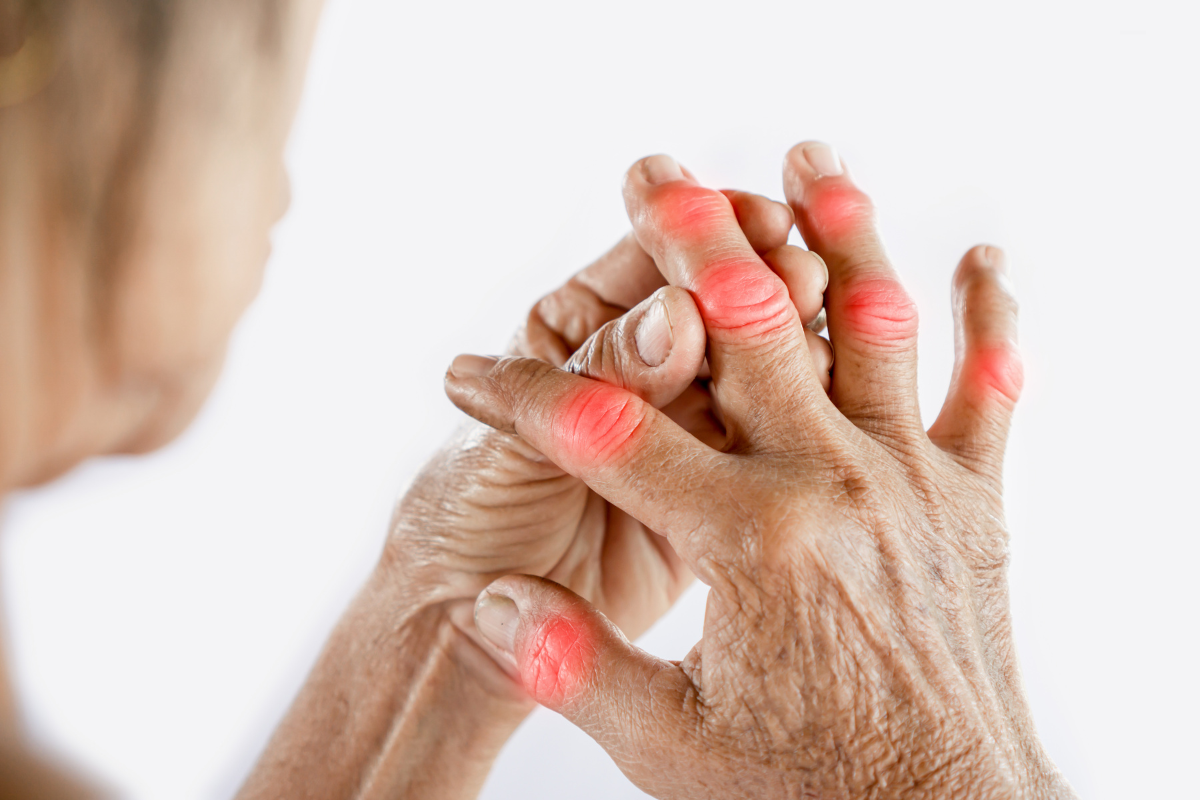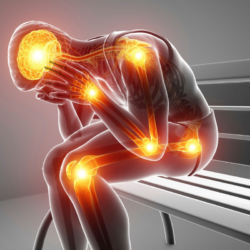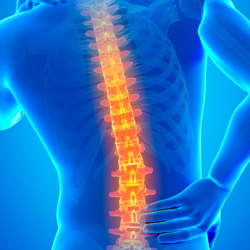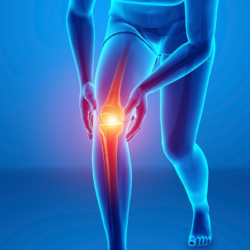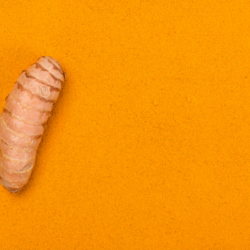We have different types of joints, but they enable us to carry out a wide range of movements every day. Joint pain is a real worry on a daily basis. Don’t let joint problems spoil your life. You have to take action!
What is a healthy joint?
Joints are classified according to the tissue that joins the bones and the presence of a joint cavity. A distinction is made between fibrous joints, cartilaginous joints and synovial joints. Synovial joints are known for their great freedom of movement. In fact, most large joints fall into this category.
In a synovial joint, several elements come together to allow movement. There is a joint cavity bounded by the synovial membrane and articular cartilage. The cartilage covers the joint’s bony surfaces, and just below it is the subchondral bone. The cavity contains a fluid called synovium, and the whole is surrounded by a capsule that holds the joint cavity together and connects the bones. Ligaments and menisci often stabilise the joint.
Movement in a joint results from the action of the muscles on the bones. The capacity for movement varies according to the joint, with different degrees of freedom between the bones to allow mobility.
Cartilage is an essential component of the joint. It covers the bone surfaces and is made up of chondrocytes and a matrix. The chondrocytes, the cartilage cells, obtain their nutrition from the synovial fluid, as cartilage has no blood vessels or nerves. The cartilage matrix contains water, collagen (mainly type II) and proteoglycans. Proteoglycans retain water and thus contribute to the mechanical strength of cartilage.
Cartilage is made up of several layers, from the superficial layer, which acts as a barrier, to the deep layer where the chondrocytes are organised into columns. A calcified zone ensures that the cartilage adheres to the bone.
Periarticular structures such as the capsule, ligaments, bursae and tendons also play a crucial role in maintaining joint stability and function.
How does joint pain manifest itself?
Repetitive movements gradually damage the tissue that connects the muscles to the bone. Lack of moisture in the joints, a diet that is too acidic… all these factors over time lead to inflammation of the joints: this is arthritis.
This inflammation occurs in the bursa. This is the connective tissue that contains the synovial fluid (the glide between bone and tendon, the cushioning for movement) and causes severe pain in the joints when it is inflamed.
As it wears away, the cartilage loses its suppleness and elasticity. The bones will then touch, causing joint pain. Over time, the cartilage wears away and the bones end up rubbing against each other: this is osteoarthritis.
What are the symptoms of arthralgia?
The clinical signs of osteoarthritis vary depending on the joint concerned, but pain is the main symptom. It is mechanical in nature, triggered and aggravated by movement, and eases with rest. The pain is more intense in the evening and can disrupt sleep. Functional discomfort, corresponding to a limitation in mobility, varies according to the patient’s activity.
In coxarthrosis, patients feel pain in the groin, sometimes radiating to the thigh, greater trochanter or buttock. This pain subsides after a short period of derusting.
Gonarthrosis is characterised by diffuse or medial knee pain. It develops mechanically, with static problems and sometimes slipping.
In digital osteoarthritis, localised, mechanical pain alternates between flare-ups and remissions.Vertebral osteoarthritis causes pain radiating to the upper limbs(cervicarthrosis), back stiffness(dorsarthrosis) or chronic lumbago(lumbarthrosis).
The general symptoms of osteoarthritis include :
- limited joint amplitude
- morning stiffness
- swelling,
- redness
- a sensation of heat,
- bone lumps,
- pain under load,
- and grinding sensations.
Warning signs that require prompt consultation include swelling, redness, joint heat and skin rashes. They may also include chest or abdominal pain, fever, eye or skin symptoms, and sudden severe pain. Joint pain is assessed to identify local joint disease or more serious systemic pathology.
Climatic conditions, such as cold and damp, exacerbate the symptoms of osteoarthritis. Osteoarthritic joints are not usually red or warm, but may swell if there is synovial effusion, which is common in the knees. Irreversible osteoarthritis lesions lead to deformities and stiffening of the joints, which can result in partial disability.
What are the possible complications?
Complications of osteoarthritis vary depending on the joint affected:
- For coxarthrosis (osteoarthritis of the hip):
Functional discomfort reduces mobility, impacting walking and daily activities. Rotational movements of the hip are particularly limited, affecting actions such as squatting or putting on shoes.
- In gonarthrosis (osteoarthritis of the knee):
Complications relate to difficulties in activities involving the knee, such as walking, prolonged standing, or climbing stairs. A cane may be necessary, and certain sports or professions should be avoided.
- Digital osteoarthritis:
Although often downplayed, it causes a significant handicap in the daily use of the hands, affecting both professional and domestic life. A morning shake-up is often necessary.
- Vertebral osteoarthritis:
Cervical involvement limits range of movement, and wearing a cervical collar can be beneficial. The INDIC (Cervical Pain and Incapacity Index) assesses the impact of the pathology. Lumbar osteoarthritis causes difficulty in walking and intermittent pain, exacerbated by prolonged sitting and eased by lying down.
General complications of osteoarthritis include muscle spasms due to immobility, stiffness resulting from muscle contraction, joint swelling due to fluid accumulation, inflammation of adjacent tissues and, in advanced stages, limb deformities, particularly in the fingers and feet. These symptoms require careful management to minimise the impact on daily life and prevent worsening.
What can be done about joint pain?
To prevent joint pain, reduce excess weight to protect the sensitive joint. Limit meat and alcohol, which contribute to a pro-inflammatory diet (creating acidity). Drink plenty of water to help eliminate waste products. Sportsmen and women should warm up, keep hydrated and moderate the intensity of their training.
If you experience joint pain or acute joint inflammation, apply an ice pack and take painkillers; don’t forget that natural solutions exist.
If you wake up with joint and muscle pain, exercise and stretch regularly in bed and after getting up. Choose a suitable pillow and change your mattress every 10 years for better support.
Joint pain is generally mechanical, aggravated by movement and relieved by rest. Functional discomfort varies according to the patient’s activity. Joints may swell and osteophytes may cause deformities. Arthritic lesions are irreversible, and can lead to joint stiffening and partial disability.
It is essential to consult a doctor to assess your joint condition in the event of acute or permanent pain. He or she will be able to advise you on pain management tools and/or specialised equipment (orthopaedics, pharmacy).
Other cases of consultation:
- Fever, chills, excessive fatigue, redness of the skin, associated muscle pain.
- Painful, red, hot or swollen joints.
- Reduced mobility, prolonged morning stiffness, post-accident pain, recurrent pain, etc
Source:
- https://www.vidal.fr/maladies/appareil-locomoteur/douleurs-articulaires.html
- https://www.vidal.fr/maladies/appareil-locomoteur/arthrose-rhumatismes.html

